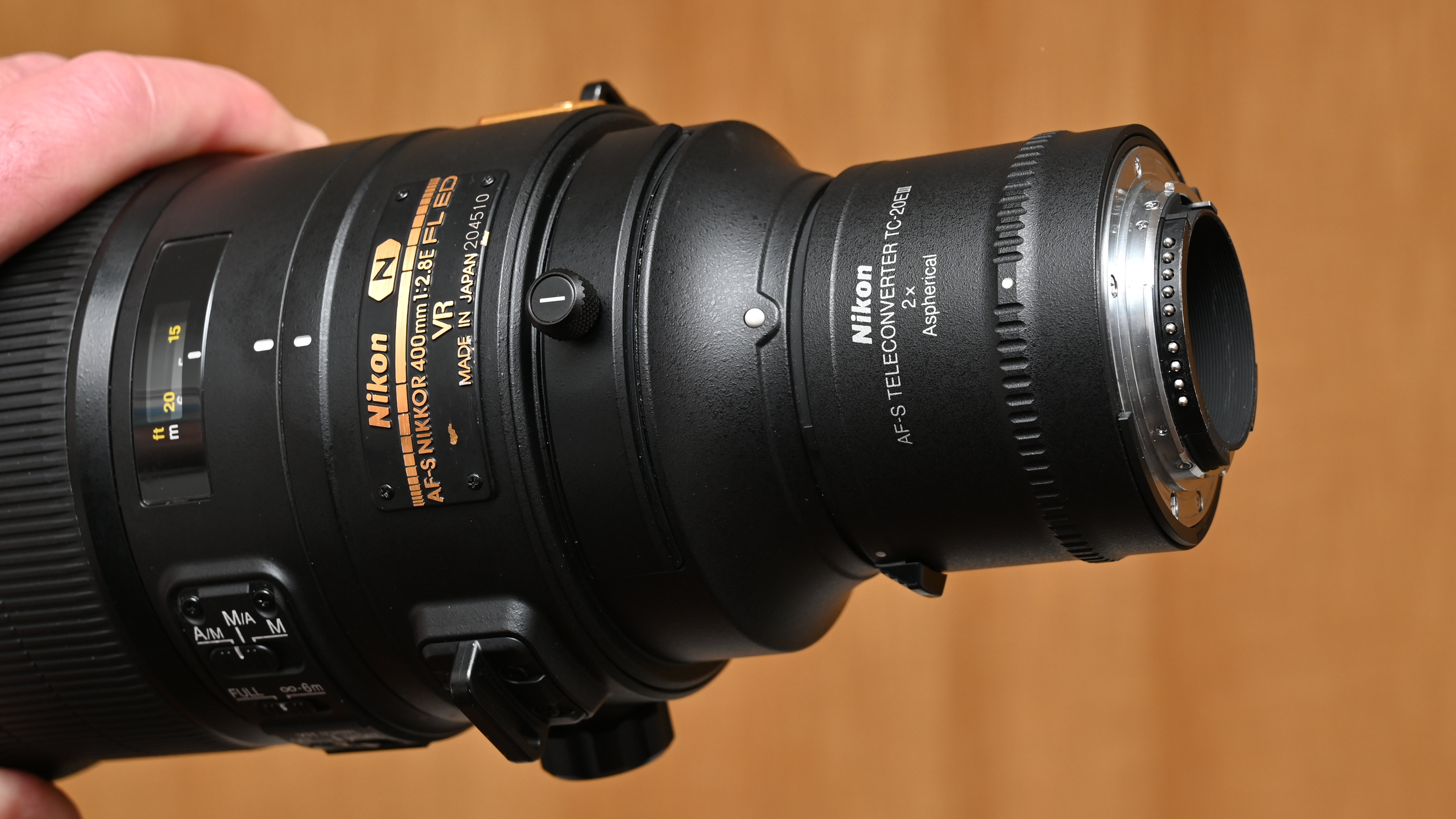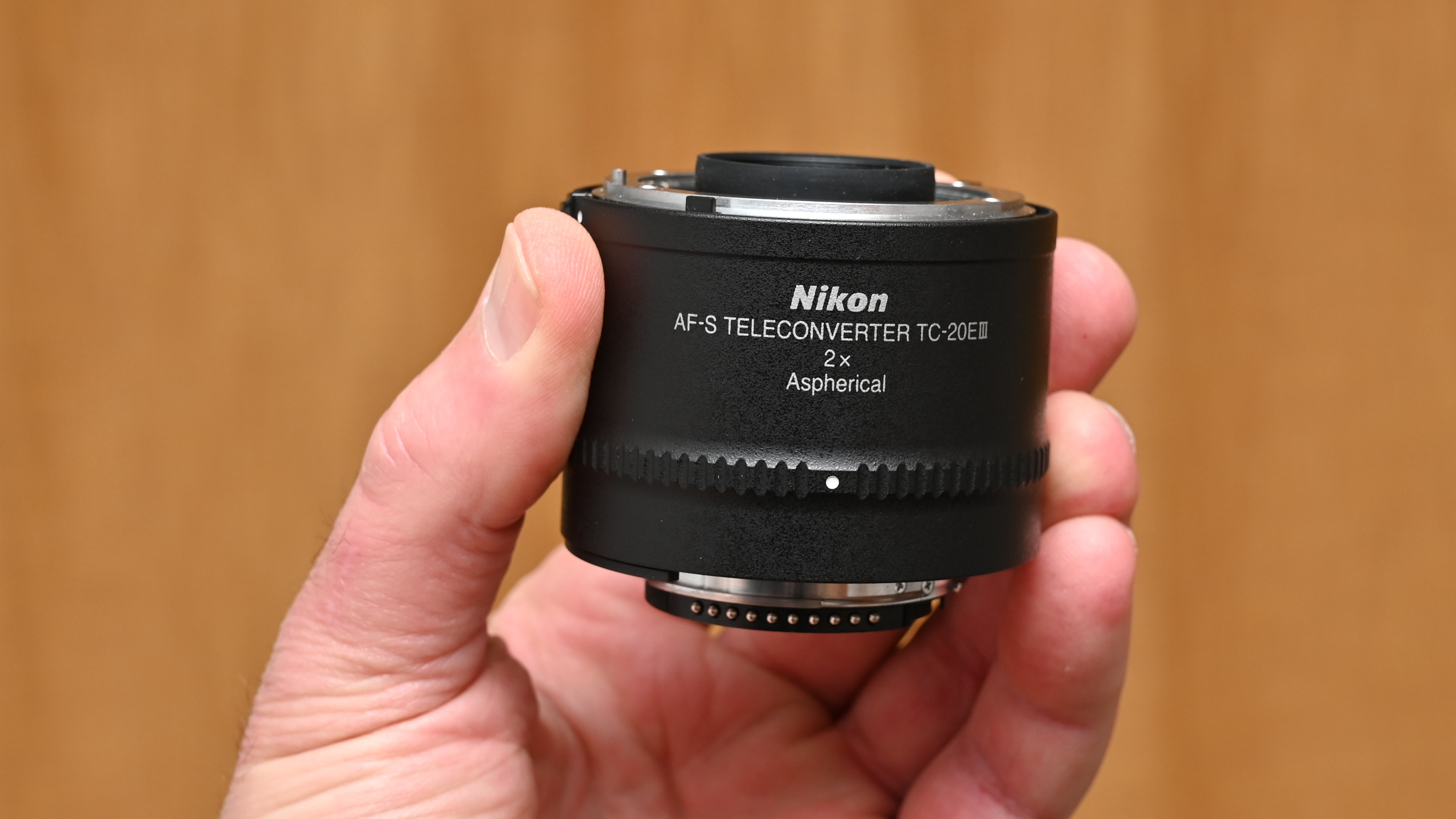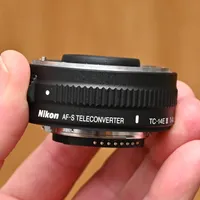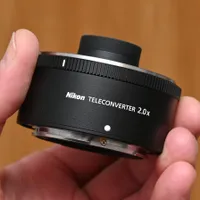Digital Camera World Verdict
The Nikon AF-S TC-20E III was something of a groundbreaking teleconverter when it was launched and, for my money, it’s still one of the best on the market. I find the 2x magnification in telephoto reach really covers the distance.
Pros
- +
Twice the telephoto reach
- +
Conveniently compact
- +
Robust, weather-sealed build
Cons
- -
2 f/stops aperture reduction
- -
Slight impact on lens performance
- -
Incompatible with non ‘AF-S’ lenses
Why you can trust Digital Camera World
It’s highly unlikely that Nikon will ever make another F-mount teleconverter, so this 2.0x version is probably the last in the line for Nikon cameras with compatible F-mount Nikon telephoto lenses. Unlike the newer Z-system teleconverters, it’s primarily designed for DSLRs but can also be used on Z-mount mirrorless cameras via an FTZ or FTZ II mount adapter. And it remains one of the best teleconverters on the market. As a 2x teleconverter, it doubles the focal length of the attached lens, with a reduction of 2 f/stops, so a Nikon AF-S 70-200mm f/2.8E FL ED VR lens effectively becomes a 140-400mm f/5.6 super-telephoto zoom.
The 2-stop aperture reduction can be a bridge too far for DSLRs. For example, if you use the teleconverter with a Nikon AF-S 80-400mm f/4.5-5.6G ED VR lens, the widest available aperture at longer zoom settings becomes f/11, giving a dark viewfinder image and ruling out autofocus even on later DSLRs that support autofocus at f/8. A plus point is that, when using the teleconverter, the minimum focus distance of the main lens remains unchanged. You therefore get a 2x boost in the maximum magnification ratio, which can edge into macro territory for close-ups with some lenses.
Nikon AF-S TC-20E III: What's changed?
A headline upgrade in the third edition is that, when it was launched back in 2009, it was the world’s first teleconverter to include an aspherical element. Aimed at professional photographers, the overall design strove for excellent all-round performance and image quality, wrapped up in a tough, weather-sealed construction. However, autofocus is only compatible with a select number of newer AF-S G and E type lenses, as there’s no mechanical autofocus screw-drive for older ‘AF’ Nikon lenses. As with other teleconverters, compatibility is only available for a relatively small number of up-market telephoto lenses anyway. Here's Nikon’s official teleconverter and lens compatibility list.
Nikon AF-S TC-20E III: Specifications
| Mount | Nikon F |
| Lens construction | 7 elements in 5 groups |
| Focal length multiplier | 2.0x that of main lens |
| Aperture reduction | 2 f/stops |
| Minimum focus distance | Same as main lens |
| Maximum magnification | 2.0x that of main lens |
| Dimensions | 66 x 48mm |
| Weight | 330g |
Nikon AF-S TC-20E III: Price & Availability
Currently priced at $497 / £529 / AU$999, the Nikon AF-S TC-20E III has been around since 2009. It’s still widely available from photographic retailers, as well as from Nikon’s own regional online stores around the world. The price might seem quite steep for a teleconverter but it’s definitely much cheaper than buying an additional super-telephoto lens if you already have a telephoto prime or zoom for which the teleconverter is compatible.
Nikon AF-S TC-20E III: Design & Handling
Measuring 66 x 48mm, or a couple of inches long, and weighing 330g, it’s the size and weight I’d expect for a modern 2x teleconverter. As such, it’s about twice the length of a 1.4x teleconverter but still very manageable and only a tiny fraction of the size and weight of carrying around an extra telephoto or super-telephoto lens.
Although relatively tiny, teleconverters need to be tough. It’s vital if you’re coupling it to a big, heavyweight lens, like the Nikon AF-S 400mm f/2.8E FL ED VR that I used during testing, which weighs in at a comparatively massive 3,800g. With a feeling a bit like the tail wagging the pony, it’s not only important that the teleconverter doesn’t come apart, but also that there’s no flexing which can degrade quality in super-telephoto shooting. As such, this third edition feels rock-solid and is upgraded for greater durability, complete with weather seals.
The best camera deals, reviews, product advice, and unmissable photography news, direct to your inbox!
The teleconverter packs in no less than 7 optical elements, including one aspherical element, arranged in 5 groups. The revised optical layout of the third edition claims to boost image quality. For maintaining full data connectivity between the main lens and the host camera body, there’s a complete set of electronic contacts.
Nikon AF-S TC-20E III: Photo Performance
Teleconverters don’t have the best of reputations for performance. Sure enough, there are some relatively cheap third-party examples on the market that degrade image quality considerably. A teleconverter basically acts a bit like a magnifying glass, enlarging the central area of the image circle produced by the main lens and passing it through to the camera.
This Nikon teleconverter is designed to make the most of what’s on offer from the main lens. And on the plus side, a teleconverter is only effectively using the central region of the image circle from the main lens, where quality is typically best. However, any teleconverter will also draw more attention to any flaw or failure. Autofocus speed can also take a hit, along with the effectiveness of optical VR (Vibration Reduction).
While I was testing the Nikon AF-S TC-20E III with a Nikon D780 camera body and a top-end Nikon AF-S 400mm f/2.8E FL ED VR prime lens, I was impressed that autofocus speed remained super-fast, locked onto subjects easily, and was well able to track movement. I also found that optical VR gave around 4-stop effectiveness for handheld shooting with and without the teleconverter in place. That’s taking into account that the focal length doubles when the teleconverter is fitted, therefore requiring a faster shutter speed anyway.
Powerful 2x teleconverters typically degrade the sharpness of the main lens but, at wide to medium aperture settings, this Nikon example does extremely well to minimize the damage. Sharpness and clarity are retained very well indeed, while color fringing is also well controlled.
Nikon AF-S TC-20E III: Sample Images
For the sake of comparison, the following gallery includes a series of shots taken with a Nikon D780 and a Nikon AF-S 400mm f/2.8E FL ED VR on its own, as well as with both Nikon AF-S TC-14E III and Nikon AF-S TC-20E III teleconverters. This shows differences between using the lens natively, as well as with the 1.4x and 2x teleconverters.
The first sequence was taken from a viewpoint overlooking the city of Bath, UK, from a distance of half a mile, on an overcast morning. Due to deteriorating weather conditions with strong winds and heavy rain, the subsequent shots were taken indoors with bounced flash.
All of the example images were taken using a sturdy tripod and exposure delay mode and shot several times to ensure the consistency of results. As per our usual testing regime, all of these images were taken in addition to the lab-test shots that we captured, based on the use of official test charts.















Nikon AF-S TC-20E III: Lab Results
We run a range of lab tests under controlled conditions, using the Imatest Master testing suite. Photos of test charts are taken across the range of apertures and zooms (where available), then analyzed for sharpness, distortion and chromatic aberrations.
We use Imatest SFR (spatial frequency response) charts and analysis software to plot lens resolution at the center of the image frame, corners and mid-point distances, across the range of aperture settings and, with zoom lenses, at four different focal lengths. The tests also measure distortion and color fringing (chromatic aberration).
Sharpness:
I tend to think that Nikon’s latest Z-system edition is the benchmark for a 2x teleconverter but this older F-mount version delivers similar retention of excellent sharpness, at least at wide to medium aperture settings of the main lens.
Fringing:
There’s a rise in color fringing towards the edges and corners of the image frame but it’s controlled pretty well and easily within the remit of automatic in-camera correction, featured in current and recent Nikon bodies going back many years.
Distortion: -0.26
As is often the case, the moderate pincushion distortion produced by the bare lens is replaced by very slight barrel distortion when using this 2x teleconverter.
Nikon AF-S TC-20E III: Verdict
My pockets aren’t deep enough to satisfy my lust for lenses. Big super-telephoto lenses in particular come with monster price tags that make them unaffordable for many of us. I love that this teleconverter gives me double the reach for minimum extra outlay and that it’s compact and lightweight enough to take along for the journey without being weighed down by an extra big lens. Performance is very impressive and, while it’s pricey for its type, you definitely get what you pay for.
Should you buy the Nikon AF-S TC-20E III?
✅ Buy this...
- Twice the telephoto reach
- Cheaper and lighter than an extra lens
- Strong build, good performance
🚫 Don't buy this...
- 2 f/stops of aperture loss
- Incompatible with many lenses
- Slight loss of image quality
Alternatives
The Nikon AF-S TC-14E III gives a lesser 1.4x rather than 2x magnification 4x, but it’s only an inch thick and 190g, and you only lose one f/stop in aperture instead of two.
Got a Nikon Z-system camera? The Nikon Z Teleconverter TC-2.0x is the native equivalent for mirrorless camera bodies and compatible Z-mount telephoto lenses.
Matthew Richards is a photographer and journalist who has spent years using and reviewing all manner of photo gear. He is Digital Camera World's principal lens reviewer – and has tested more primes and zooms than most people have had hot dinners!
His expertise with equipment doesn’t end there, though. He is also an encyclopedia when it comes to all manner of cameras, camera holsters and bags, flashguns, tripods and heads, printers, papers and inks, and just about anything imaging-related.
In an earlier life he was a broadcast engineer at the BBC, as well as a former editor of PC Guide.
















